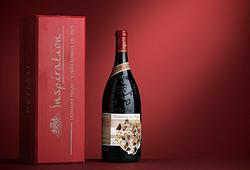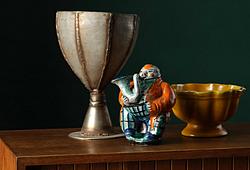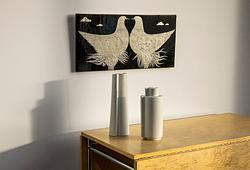A pair of famille rose trembleuses, Qing dynasty, 18th Century.
Shell shaped with pierced cup holders, decorated in famille rose. Length 22 cm.
Fritting. Wear.
Tuontiarvonlisävero
Tuontiarvonlisävero (12%) tullaan veloittamaan tämän esineen vasarahinnasta. Lisätietoja saat soittamalla Ruotsin asiakaspalvelumme numeroon +46 8-614 08 00.
Alkuperä - Provenienssi
From the Collection of Tove and Karl Emil Strømstad (born 1936), Norway. The couple built their collection over the decades. They started to collect in the early 1970's after buying the first piece, a famille rose bowl, dating from the 18th Century. Mr Strømstads work at IBM brought the couple and their family to various places around the world and they built their vast academic collection of ceramics dating from the Han dynasty to the Qing dynasty by visiting auction houses, antique dealers and antique fairs. Always striving to acquire pieces form different epoques and constantly seeking more knowledge about the pieces, the techniques and their history.
Strømstad label 537. And with old collectors label to the base.
Näyttelyt
For other items from this collection, se Sothebys, Asian Arts / 5000 Years. 18 April 2023. Paris. Lot no 1-39.
Kirjallisuus
After a silvered model, probably made for the Spanish market. A mancerina/trembleuse is special piece for the chocolate service. It was invented by a Spanish grandee, in Mexico, in the seventeenth century and was named after the man who had invented it, Pedro de Toledo, 1st Marquis of Mancera, who served as Viceroy of Peru from 1639 to 1648. Known in France as “tasse trembleuse” and “Chocolate stand” in England, some were ordered from China but remain more easy to find in Southern Europe.

























































